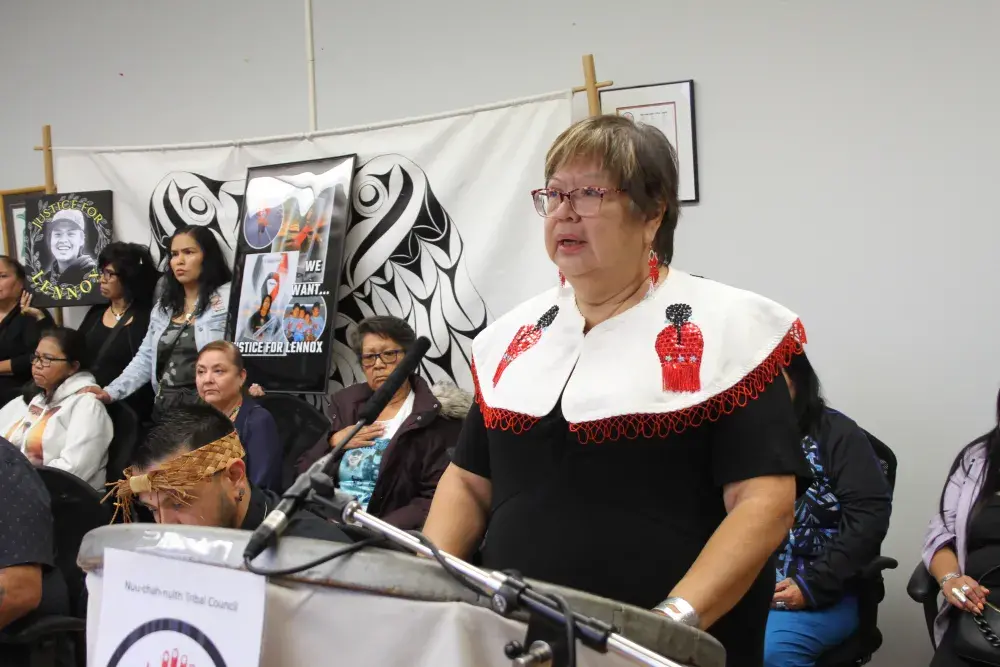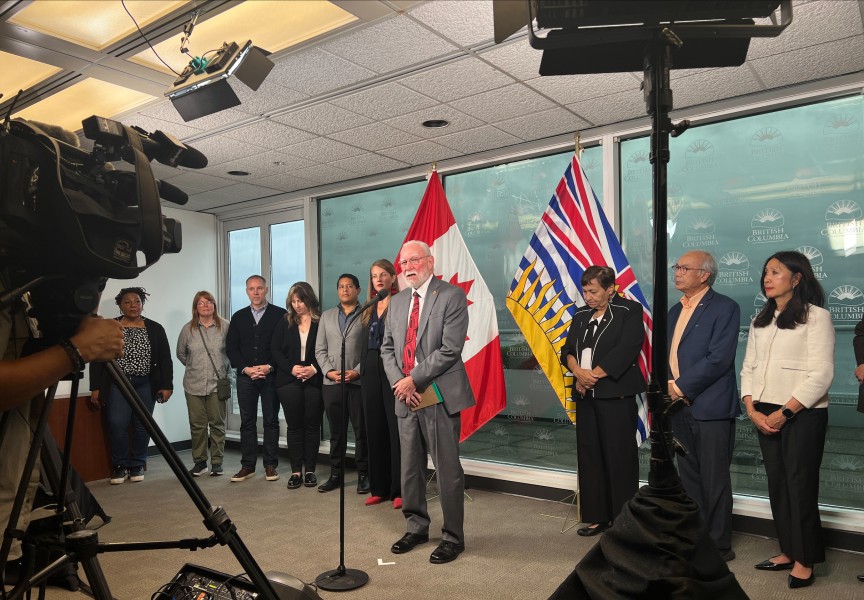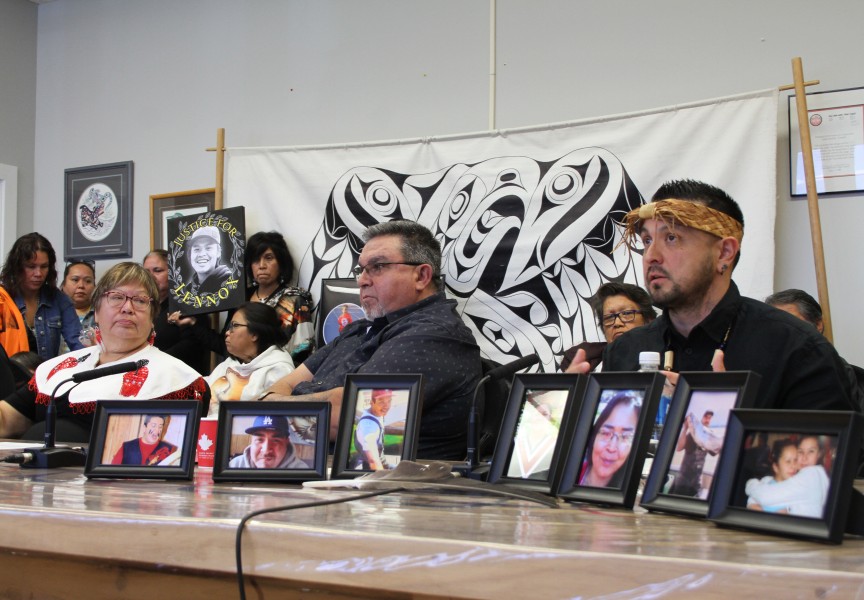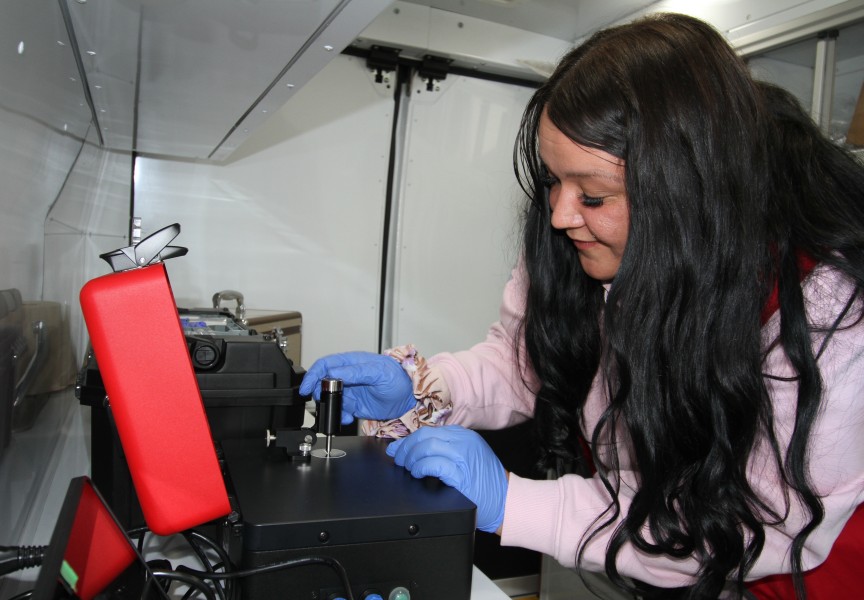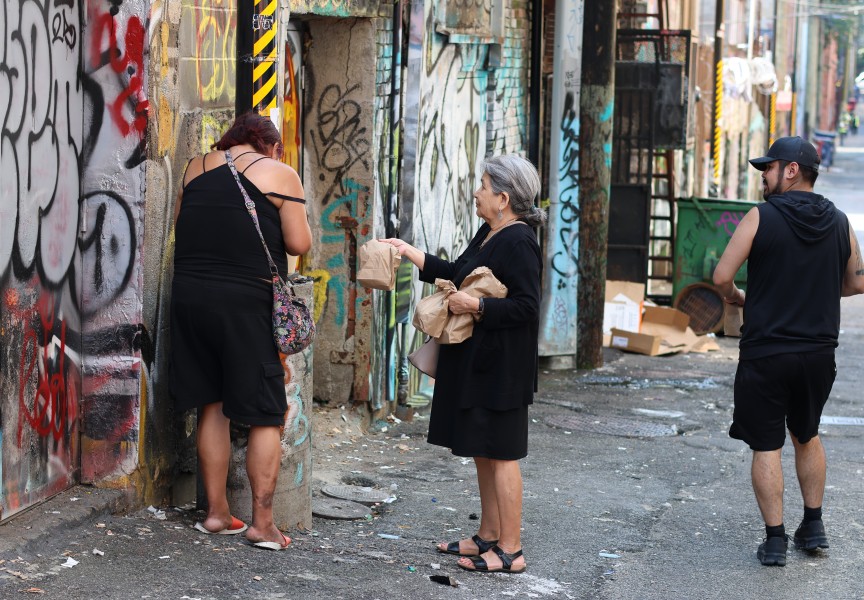Judith Sayers and Les Doiron have been elected serve another term as the Nuu-chah-nulth Tribal Council’s president and vice-president.
Voted in by a majority of society members, the incumbent leaders were re-elected at the NTC’s annual general meeting on Oct. 1, which was held at the Tigh-Na-Mara resort in Parksville. Reflective of populations in the tribal council’s 14 First Nations, there are currently 108 NTC society members, who are determined by the leadership of their respective nations. Sayers and Doiron were the only candidates to step forward to be on the ballot.
For the newly re-elected leaders, the most urgent matter remains the ongoing state of emergency from the prevalence of toxic drugs and its underlying mental health crisis. With every Nuu-chah-nulth family affected in one way or another by drug overdose, in September 2024 the NTC declared the state of emergency in the hopes of gaining more support from other levels of government.
But one year later there remains no drug detox facility in Nuu-chah-nulth territory on western Vancouver Island. This includes Port Alberni, which has the Island’s highest rate of fatal overdoses over the first half of this year.
“I know that they’re building new facilities, but the minister of health hasn’t asked us where these facilities should be located,” said Sayers of her dealings with the provincial government. “We need to have more of a presence there so we can put some of these facilities into Nuu-chah-nulth territories.”
In August Doiron visited the Downtown Eastside, a Vancouver neighbourhood that has consistently had by far the highest rate of fatal drug poisoning in B.C. Now the NTC plans to hire two outreach workers to serve this area.
“We have a lot of people that are on the Downtown Eastside,” said Doiron.
Sayers is also concerned about enabling Nuu-chah-nulth nations to better prepare for emergencies. These include tsunamis, as many of the NTC coastal communities reside right by the Pacific’s shore, as well as the risk of wildfire. During a blazing August in 2025 the Mount Underwood forest fire grew south of Port Alberni faster than any over the past generation in the region, further reinforcing the hazard Nuu-chah-nulth communities face.
Two months after Mount Underwood started, the road from Port Alberni to Bamfield, Anacla and Nitinaht remains closed due to the wildfire’s damage.
“They’re saying it’s going to be open by the end of October, but I saw BC Hydro bring in all kinds of extra crews to get the electricity to Ditidaht, Huu-ay-aht, Bamfield quickly,” said Sayers of the province’s repairs to the Bamfield road. “I think they got power on two weeks earlier than they expected. That’s the kind of service we expect of the B.C. government to get this highway open, but we’re not seeing that.”
Part of Doiron’s portfolio is gaining federal support for a long-term capitol infrastructure plan the NTC is developing.
“We’re trying to coordinate with the feds a 35-year plan for infrastructure,” he said. “What we’re looking for is a lump sum in order to be able to develop that 35-year plan, which would involve a lot of different things as well. It might be changes to the tribal council, growth for the tribal council, or maybe another entity in itself for the finances because it would be that big.”
A fundamental part of this plan is to update the facilities serving on-reserve Nuu-chah-nulth communities.
“Reservations, from the inception of the Indian Act, have never grown in size, so we’re limited to the amount of real estate that we’re working with,” noted Doiron. “However, the infrastructure that’s existing is aged.”
The vice-president is confident of the capitol infrastructure plan, but the NTC is dealing with a different Liberal government than the last decade under former prime minister Justin Trudeau. During the spring election Mark Carney campaigned under a platform to cut $15 billion in annual government spending by 2028 to better bring federal revenue in line with operational costs. Then over the summer Carney’s cabinet minsters were tasked to find 15 per cent in savings from their departments operations over the next five years.
“It could be First Nations that they’re taking 15 per cent from, and that’s what we’re fighting so hard against,” said Sayers.
Meanwhile, developments like Bill C-5 have sparked fears that the new government in Ottawa will steamroll over First Nations rights in order to get national projects built. The recently passed Building Canada Act enables the feds to identify projects that are in “the national interest” to strengthen Canada’s economy, thereby streamlining assessment and approvals.
“That’s a bit scary to me that this government is heading in that direction,” said Sayers. “The priority of this federal government seems to be in economic development, they just feel that Canada is failing economically, and that they need to do everything they can to push through major projects.”
“This really signals to me that so much of what we worked on, collaboration, cooperation, consultation, is really being pushed to the back burner, like we saw with Bill C-5,” she added.
This will be Sayers third term as NTC president, after first being elected Sept. 25, 2017. Over this time she’s found it critical to build strong relationships with everyone she deals with.
“We just have to keep educating, keep promoting, using media as much as possible and trying to raise our voices loud enough so that Ottawa can hear,” said Sayers. “It’s just never giving up, continuing to find that advocacy wherever you find the need.”
“It’s so important that you know who you’re dealing with, and that they know who they’re dealing with,” added Doiron, who was first elected Feb. 22, 2023, halfway through the last vice-president term.
“I can’t help but think about our ancestors. For me, I merely walk in their footsteps,” he added. “Being elected means victory, and the victory belongs to all of Nuu-chah-nulth nations that show their belief in myself and the governance of the Nuu-chah-nulth Tribal Council.”

